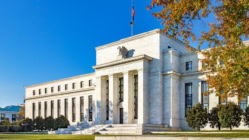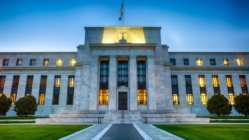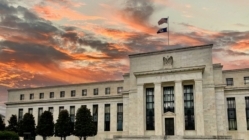Three pieces of news surfaced last week that should have pushed interest rates through the roof!
- Inflation (CPI) came in much hotter than expected;
- The Fed made comments about “rates needing to stay higher to ensure inflation is tamed;” and
- An employment report (jobless claims) came in much stronger than expected.
When I saw this news surface, I thought we’d see rates climb at least 1/4%, but instead they actually fell a bit on the day that the surfaced.
This Time Ain’t Different
Early 1990s: When I was at Wells Fargo in the early 1990s, our Chief Economist told us again and again that California was immune to recession risks because the state was so well diversified (with entertainment, banking, defense, real estate, and tech). But then California got crushed, and the economist got fired. Apparently, that time was not different.
Late 1990s: In the late 1990s, I knew many people who retired to live off of their dotcom stocks – even though the price-to-earning ratios were approaching infinity (as most dotcoms had NO earnings). “This time is different,” everyone told me. It wasn’t. Dotcoms imploded. And those poor people had to get jobs.
Early 2000s: By 2005, it was obvious to everyone in the mortgage industry with a brain cell and a pulse that housing was going to collapse – given how ridiculous lending guidelines had become. BUT, if any of us said anything, we were labeled doom and gloom pessimists because that time was different. Not so much.
So, what happened last week was the bond market reminding us that this time ain’t different too. Bond investors, with millions of dollars on the line, clearly expect lower inflation and slower GDP growth (recession). And stock investors are … confused – like they are prior to most recessions (see 1999 and 2007).
I will readily admit that our government did a great job of delaying the recession with massive spending and tremendous support for an ailing banking system. BUT, they can’t delay it forever (but boy, will they try!).
Here are several screaming indicators that have never or almost never failed to predict recessions.
- Yield Curve Inversions. When short-term rates climb higher than long-term rates, we almost always see recessions follow, as per this Heresy Financial video.
- Tax Revenues Plummet. When tax revenues plummet, we always see a recession, as per this Heresy Financial video.
- Three Months of Downward Jobs Revisions. Per Danielle DiMartino Booth in this podcast (16 minutes in), whenever we see jobs numbers revised downward 3 months in a row, we always see recessions. We’ve seen that and then some.
- Conference Board Leading Index. Whenever this dips below a negative 4.5%, we always see recessions. It is negative 7.5% now and it has been negative for months, as per this EPB Research video.
- Gross Domestic Income (GDI). Whenever GDI is negative year over year, we are IN a recession. And GDI is negative year over year, as per this EPB Research video.
Long story short: Don’t let the stock market confuse you. The Fed is not all-powerful and they did not stave off a recession; they merely helped forestall it.
Rates will fall.
























